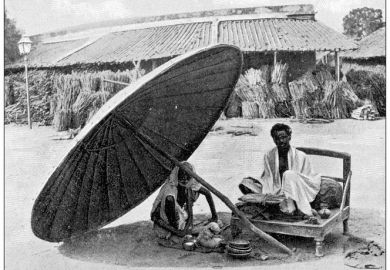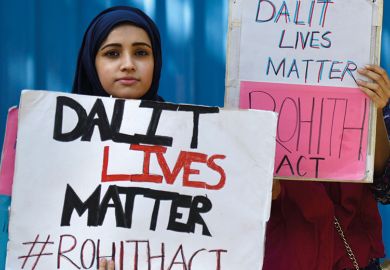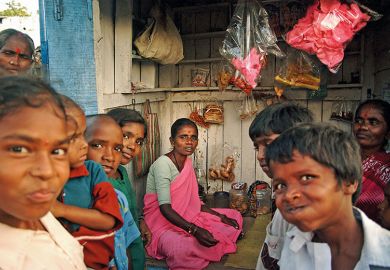An Indian Supreme Court ruling reserving 10 per cent of jobs and education for so-called economically weaker sections of society marks a “fundamental shift” away from its caste-based affirmative action system – effectively reserving coveted university seats for upper-caste applicants, academics said.
Earlier this month, the country’s highest court backed a controversial 2019 constitutional amendment by India’s right-leaning government to set aside an additional 10 per cent of seats, raising the total number of reserved seats at Indian universities to nearly 60 per cent.
Meant to ensure that India’s most severely disadvantaged citizens get an opportunity to enter universities and the civil service, its “reservation system” initially targeted India’s lowest caste of Dalits and its indigenous tribal peoples. In the early 1990s, the system was extended to “Other Backward Classes”, a category that includes much of India’s population.
However, the recent move marks the first time that a non-caste group has had its rights enshrined in law.
“It constitutes a fundamental shift,” said Ashwini Deshpande, a professor of economics and founding director of the Centre for Economic Data and Analysis at Ashoka University.
She said that India’s reservation system was meant to compensate for longstanding discrimination and stigmatisation of certain social groups rather than for economic status, a “transient feature”, since individuals can fall into or out of poverty.
While she was in favour of continued use of the reservation system, she said she did not support the recent court decision, noting that the income cap of 800,000 rupees (£8,400) per year meant that 98 per cent of India’s population qualifies.
“Since [lower castes] earning below the income cut-off are not eligible, this makes it effectively a quota for upper castes who are not in the top 2 per cent of the income distribution,” Professor Deshpande said.
Suraj Yengde, a Dalit scholar and research associate in the department of African and African American studies at Harvard University, likened the situation in India to the ongoing US Supreme Court case over affirmative action, which is seen as likely to end in a ban on the use of race as a factor in admissions.
He recalled experiencing harassment and envy from upper-caste peers when he was a university student, having been admitted under the quota system as a “scheduled caste”, blaming a “deep insecurity due to the erstwhile serfs, the toilet cleaners [and] drivers…with their children now getting into the so-called mainstream”.
Still, some scholars noted that already, financial considerations have been factored into the affirmative action system.
Frank de Zwart, a lecturer in comparative politics and policy analysis at Leiden University who focuses on India, said that, even before the Supreme Court ruling, the so-called creamy layer – which bars lower-caste applicants with higher incomes from qualifying under the quota system – undermined a purely caste-based system.
Although he said the recent move was a political crowd-pleaser among upper castes, likely benefiting India’s ruling party, it did not change lower-caste individuals’ allocated spots under the system.
“The court’s ingenious reasoning here serves exactly to satisfy high-caste voters without having to touch upon the caste-based scheme at all,” he said.
He thought the change could be positive, benefiting some students now at a disadvantage.
“There are many high-caste families and areas that are actually very poor and as deserving of getting access to education…they pay a price now because they can’t compete with their own [category] and [are] not allowed to compete in the others,” he said.
Register to continue
Why register?
- Registration is free and only takes a moment
- Once registered, you can read 3 articles a month
- Sign up for our newsletter
Subscribe
Or subscribe for unlimited access to:
- Unlimited access to news, views, insights & reviews
- Digital editions
- Digital access to THE’s university and college rankings analysis
Already registered or a current subscriber?








